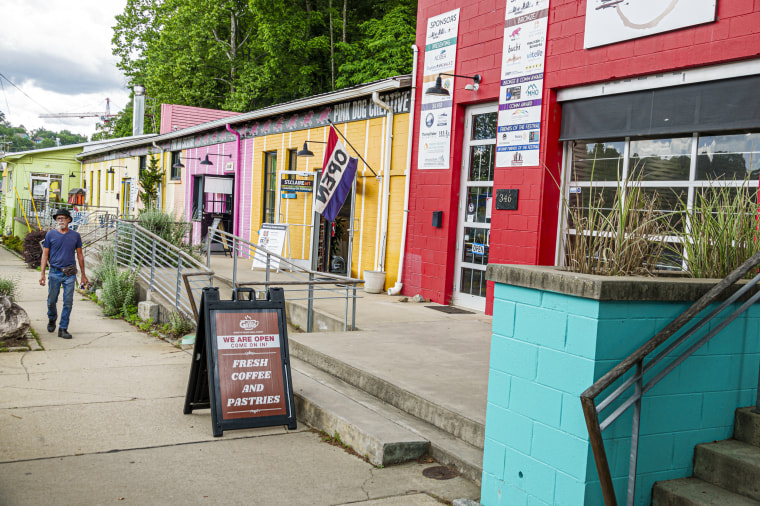Trumpower works in Southside Studios, a collective workspace run by a fellow artist on the bank of the Swannanoa River in South Asheville. Trumpower, who spent the run-up to the storm packing up pottery and other local artists’ pieces, said no one at the time expected the flooding to be as severe as it was.
The next morning, Trumpower drove to the studio owner’s home and found that “she was gone to go check the studio. She came back, she was like, ‘Our entire studio is gone.’”
The owner posted video of the floods on Instagram, writing, “I am in complete shock.”
Sara Legaski, who owns House of Kismet on Foundy Street, said the vintage clothing shop and art gallery was destroyed, and her insurer has told her none of her losses will be covered.
“There should have been a more urgent call for people to be prepared,” she said, echoing growing criticism in the hurricane’s wake. “If you really want to get down to it, let’s address climate change,” she added, referring to “more water entering the river every time it rains.”
At least 70 people have died in Buncombe County because of the storm; many more remain missing or displaced. The mountainous region known for its winding and narrow roads remains largely unnavigable due to road closures and collapses. Many residents without electricity are still waiting for food, water and medical supplies. Legaski and others Asheville residents say there has been looting as essentials remain scarce.
“The devastation was beyond belief, and even when you prepare for something like this, this is something that’s never happened before in western North Carolina,” Gov. Roy Cooper said during a visit to the area on Monday.
Staff members at the Penland School of Craft near Bakersville, North Carolina, a prominent center for students and visiting artists, said a whitewater rescue crew showed up at the facility in the aftermath of the storm. “They needed a place to sleep and a warm meal,” said Penland’s executive director, Mia Hall. So the facility, which includes housing, a dining hall and a self-contained water system, put the rescuers up for the night.
“Organizations like ours are crucial for these small communities, because it’s often the glue that holds this creative community together,” she said.
Hall said a group of artists based out of Penland got together to deliver supplies to neighbors, in some cases chainsawing into nearby houses to access trapped residents.

The Blowing Rock Art and History Museum in Blowing Rock, North Carolina, didn’t suffer any damage, but its neighbors did. So museum employees began visiting shelters for displaced residents, delivering art kits to families, said its director, Stephan Dragisic.
“We’re at a vulnerable point where any act of kindness is so appreciated, any act of humanity is so necessary,” he said. “The museum exists to do this kind of work, where we reach beyond the walls.”
Dragisic couldn’t say what the future of the region might look like, but he’s already thinking about how to bring visitors back.
“Come and fall in love with this area, and help us share the stories of this area, and help us protect the area, too,” he said.

Leave a Reply